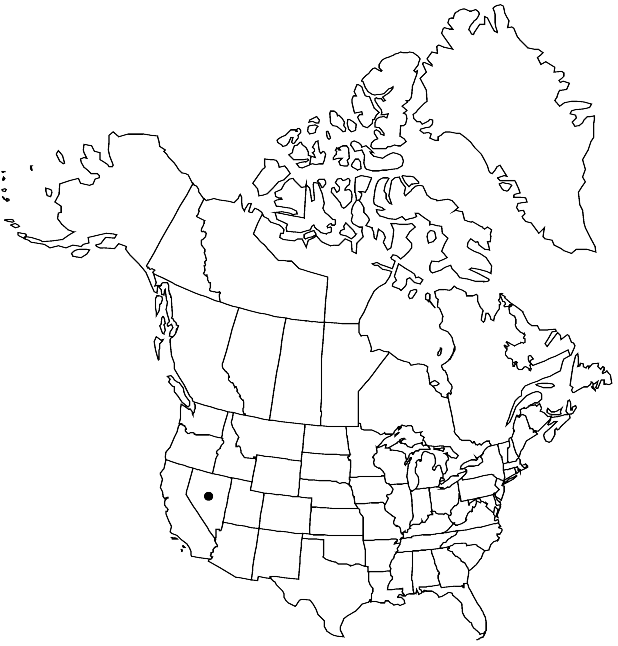Draba paucifructa
Madroño 5: 127. 1939.
Perennials; caudex simple or branched (not fleshy, usually with some persistent leaf remains); sometimes scapose. Stems unbranched, (0.1–) 0.3–0.9 dm, glabrous throughout or sparsely pubescent proximally, trichomes simple and 2–6-rayed, 0.1–0.5 mm. Basal leaves rosulate; petiolate; petiole (0–0.5 cm), ciliate throughout; blade oblanceolate to obovate, 0.4–1.7 (–2.3) cm × 1.6–4 (–6) mm, margins usually entire, rarely denticulate, (sparsely ciliate, trichomes simple, 0.3–0.8 mm), surfaces pubescent, abaxially with stalked, (2–) 4 (–6) -rayed trichomes, (0.05–) 0.1–0.6 mm, adaxially with simple and fewer, stalked, 2–4-rayed ones. Cauline leaves 0 or 1; sessile; blade ovate to lanceolate, margins entire, surfaces pubescent as basal. Racemes (2–) 4–9 (–12) -flowered, ebracteate, elongated in fruit; rachis slightly flexuous, glabrous. Fruiting pedicels divaricate-ascending, straight, 2–5 (–8) mm, glabrous. Flowers: sepals ovate, 1.2–1.7 mm, pubescent, (trichomes simple and short-stalked, 2-rayed or 3-rayed); petals yellowish (quickly fading white), spatulate, 1.8–2.2 × 0.6–1 mm; anthers ovate, 0.25–0.3 mm. Fruits elliptic to linear-lanceolate, plane, flattened, 5–10 (–12) × 1.7–2 (–2.5) mm; valves glabrous; ovules 20–30 per ovary; style 0.08–0.2 mm. Seeds oblong, 0.9–1.2 × 0.5–0.8 mm. 2n = 40.
Phenology: Flowering Jun–Jul.
Habitat: Moist, shaded slopes among limestone and dolomite rocks
Elevation: 2600-3500 m
Discussion
Of conservation concern.
Draba paucifructa is known from the Charleston Mountains in Clark County. M. D. Windham (2004) suggested that it is an allopolyploid resulting from hybridization between D. albertina and D. lonchocarpa, and he discussed the morphological features that distinguish this species from its putative parents.
Selected References
None.
Lower Taxa
"elongated" is not a number."thick" is not a number."dm" is not declared as a valid unit of measurement for this property."dm" is not declared as a valid unit of measurement for this property.

